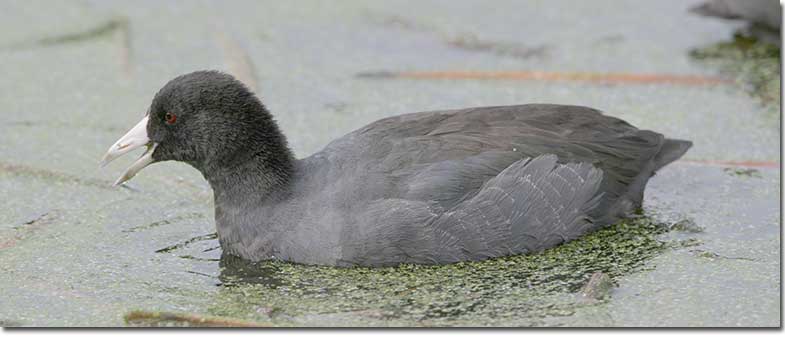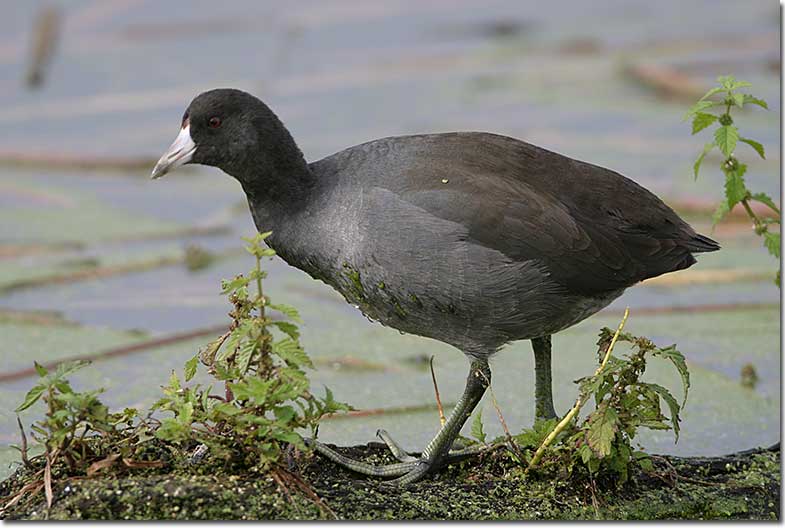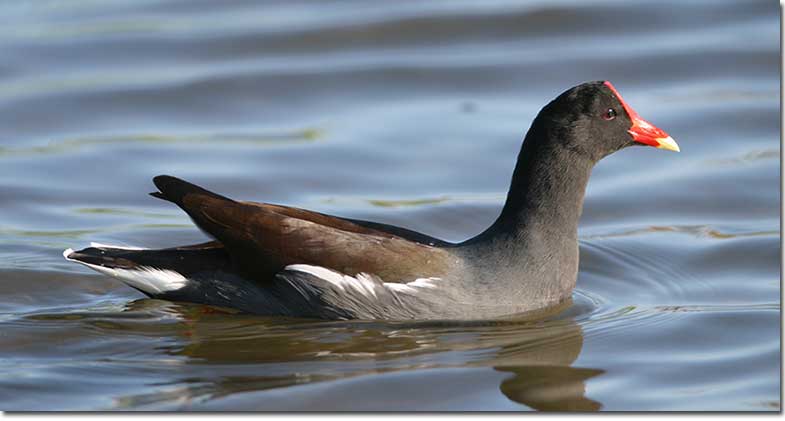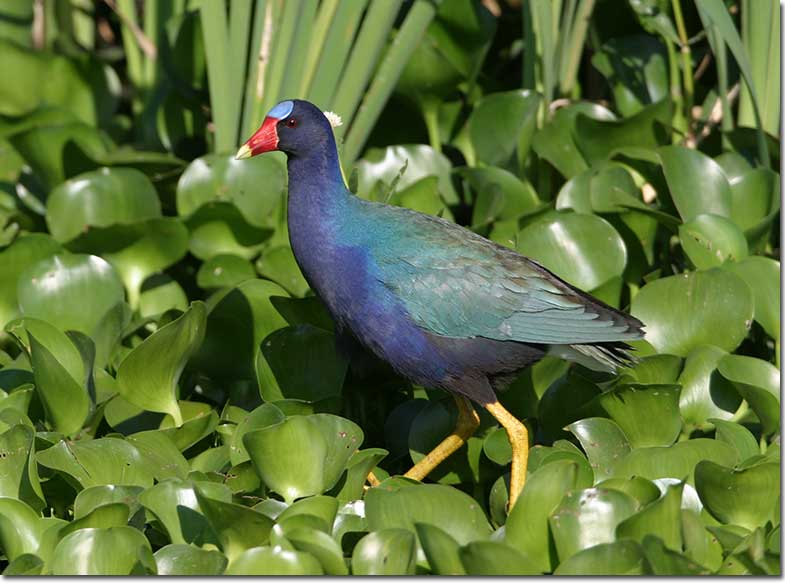
Coots and gallinules are not the typical waterfowl. While they are duck-like in appearance they are more closely related to the rails.
On this page
American Coot
A common and widespread rail species, the American Coot is sometimes territorial but often gregarious outside of the breeding season, and may gather in noisy flocks to forage for underwater plant materials. Although strong fliers, American Coots need paddling starts across the water’s surface to become airborne.
American Coot is a member of the rail family about the same size as a chicken or small duck. This plump bird has blackish plumage with dark gray highlights on the body. Females and males of the American Coot look the same, but males are usually slightly bigger.
When it comes to vocalizations, males are more vocal. Females have different vocalizations but, without a lot of practice, these are complex and can be tough to discern. In general, the grunting and squawking notes of the female are more nasal.
American Coots are often prey for hawks, owls, and Bald Eagles, and when threatened, they may begin splashing or actually dive to avoid capture. Repeated capture attempts by an aerial predator may result in exhaustion of a coot and its eventual capture.

Head darker than back. White bill. May show small, reddish shield on the head at the base of the bill. Greenish legs with long toes. Photograph © Sam Crowe.

Pale wing linings. Photograph © Sam Crowe.
Common Gallinule
Like other marsh birds, the Common Gallinule is local in its distribution, depending on the availability of its preferred habitat. Dense aquatic vegetation such as cattails or bulrushes is important for Common Moorhens, though the surrounding landscape can be either natural or urban.
Large feet enable the moorhen to walk across soggy marsh vegetation. It does not have webbed feet like ducks, but is still able to swim quite capably. It prefers to hide in vegetation if threatened, but can dive briefly to escape an attack from a hawk.
Common Gallinules are duck-like in shape, and are grayish-brown above and gray below, with a white line along the flank. They are easily recognizable by the red on their face and bill.
Its common name has gone back and forth from Gallinule to Moorhen and back to Gallinule.

White in the wing and tail. Brown back, gray flanks, darker head. Red forehead shield on adult, reddish bill with pale tip. Photograph Sam Crowe.
Purple Gallinule
Boldly colored in iridescent greens and blues, the Purple Gallinule makes a dramatic impression on the observer. Prone to wandering, Purple Gallinules occasionally turn up well outside of their southern U.S. breeding range, even in other countries.
Purple Gallinules are medium-sized, chicken-sized birds with quite long, bright yellow legs. They also have long, yellow toes to help them clamber around grassy marsh vegetation.
These birds have a deep blue and purplish head, neck, and underparts, and a glossy, dark green and bronze back and wings. In certain lighting, their upperparts can also appear to be purple or dark blue.
Juvenile Purple Gallinules from a first brood may help feed young birds in a second brood. Rice farms are often used for nesting, but an early harvest can mean that some young birds are lost to harvesting activities.

Yellow legs have long toes. Blue body with blue-green wings and back. Blue shield, red bill with yellow tip. Photograph Sam Crowe.


Greg
Sunday 1st of October 2023
To add to the confusion you could have included the grey-headed swamphen to this article.
Patrick O'Donnell
Thursday 5th of October 2023
@Greg- Yes, good suggestion!